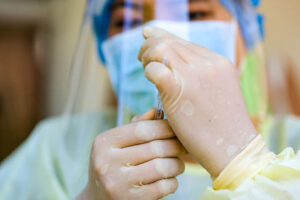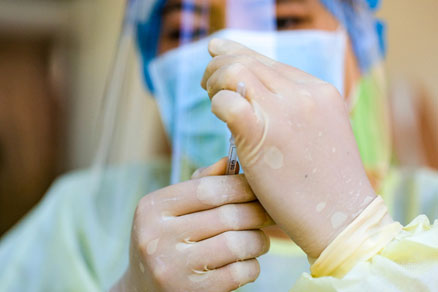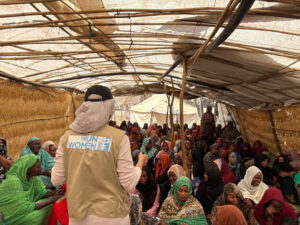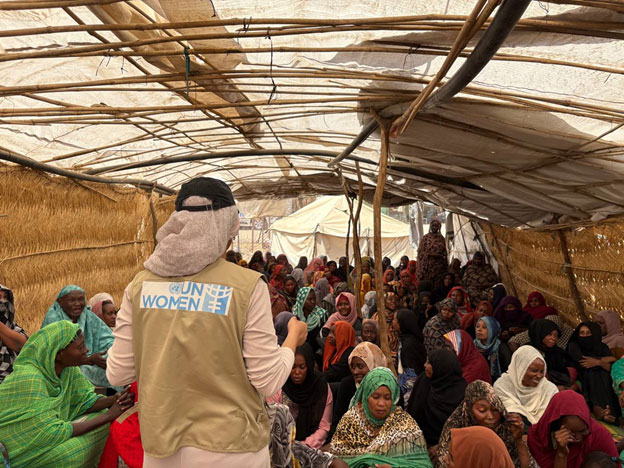
Civil Society, Featured, Global, Headlines, Health, Humanitarian Emergencies, IPS UN: Inside the Glasshouse, TerraViva United Nations

Regional cooperation can help countries respond more effectively to future pandemics. Credit: Asian Development Bank (ADB)
– In an interconnected world when infections can circle the globe in hours, cooperation in preparing for pandemics is essential. The COVID-19 pandemic highlighted just how vulnerable countries are when surveillance is fragmented, laboratory networks are underfunded and underequipped, and vaccines are not dispersed equitably.
To safeguard regional health security, several health interventions must be treated as regional public goods.
Regional public goods are services or assets that benefit multiple countries but cannot be provided by a single nation alone. They allow developing economies to cooperate on costs, expertise, and technology for greater development impact than they could achieve individually.
For example, efficient regional infrastructure and trade facilitation brings down transportation and trade costs and promotes freer movement of people and goods; delivering energy across borders improves access to sustainable energy; and financial agreements, such as the Chiang Mai Initiative Multilateralization, boost regional financial stability during crises.
Regional public goods fall into three broad categories: economic initiatives such as transport infrastructure, energy networks, and trade agreements like the Regional Comprehensive Economic Partnership; environmental efforts including river basin management, pollution control, and cross-border conservation programs; and social investments such as public health systems, regional education platforms, and collaborative research networks.
Countries in Asia and the Pacific already work together on trade, infrastructure, and climate action. Broadening areas of cooperation, however, can help countries meet their development goals and address increasingly complex health challenges, including emergencies.
This partnership is particularly important in the area of health emergency response.
A succession of human and animal infections including SARS, avian influenza, African swine fever and COVID-19 have shown just how quickly pathogens can go from a local problem to one that threatens regional and even global security. Countries can protect themselves through early alerts and early action via coordinated surveillance, data-sharing, and equitable vaccine access.
Responses to many recent outbreaks, including the COVID-19 pandemic, have been slow, fragmented, and unfair. Greater regional cooperation can mitigate the impacts of epidemics, especially for the most vulnerable, by pooling expertise, resources, and response capacities.
Health intersects with transport, trade, gender equality, education, and livelihoods. A healthy population underpins a resilient economy and supports social stability. Supporting each other to build systems that can prevent and respond to outbreaks makes sense for countries and the region.
To respond faster and smarter to the next pandemic, countries in Asia and the Pacific should focus on four high-impact areas regional integration and collective action:
Contact Tracing Networks
Early detection saves lives but only if data move faster than the disease. A regional contact tracing network, using interoperable digital tools and shared protocols, can help track outbreaks across borders.
By linking national systems through common standards and real-time data-sharing agreements, countries can monitor risks in high-risk areas, such as along borders and major transit corridors, and prevent spread.
Health Communications Coordination
Misinformation was a major problem during the COVID-19 pandemic, eroding public trust and weakening response efforts. A regional health communications framework, backed by multilingual messaging templates, rumor tracking systems, and coordinated press briefings, can ensure consistent, culturally relevant, and science-based public information across countries. Successes in reaching vulnerable populations and mobile communities can also be quickly shared.
Telemedicine for Cross-Border Care
Regional telemedicine platforms can connect healthcare providers across borders, especially in remote or small island states, ensuring continued access to care even when in-person services are disrupted. Joint investments in infrastructure, digital health standards, and clinician training can allow countries to offer virtual consultations, diagnostics, and even specialist referrals across the region.
Region-wide Public Health Funds
Collaborative procurement of vaccines, therapeutics and diagnostics have helped countries respond to disease outbreaks, and eradicate public health threats. Region-wide public health funds maintained by cooperating counties offer a means of improving timely access to life saving countermeasures.
Effectively preventing and preparing for pandemics requires countries to work in concert. These approaches can strengthen all types of health services and build resilience to all kinds of health threats. Now is the time to act decisively and secure a healthier, more prosperous future for all.
This article was originally published on the Asian Development Blog, and is based, in part, on research related to ADB’s 1st INSPIRE Health Forum: Inclusive, Sustainable, Prosperous and Resilient Health Systems in Asia and the Pacific. Ben Coghlan contributed to this blog post.
Dr. Eduardo P. Banzon is ADB Director, Health Practice Team, Human and Social Development Sectors Office, Sectors Group, who champions Universal Health Coverage and has long provided technical support to countries in Asia and the Pacific in their pursuit of this goal.
Dr. Michelle Apostol is a Health Officer for the Health Practice Team of ADB supporting the bank’s initiatives in strengthening health systems of member countries and advocating for the advancement of Universal Health Coverage (UHC).
Anne Cortez is a communications and knowledge management consultant with ADB. She brings over a decade of experience working with governments, think tanks, nonprofits, and international organizations on initiatives advancing health equity, climate action, and digital inclusion across Asia and the Pacific.
IPS UN Bureau










